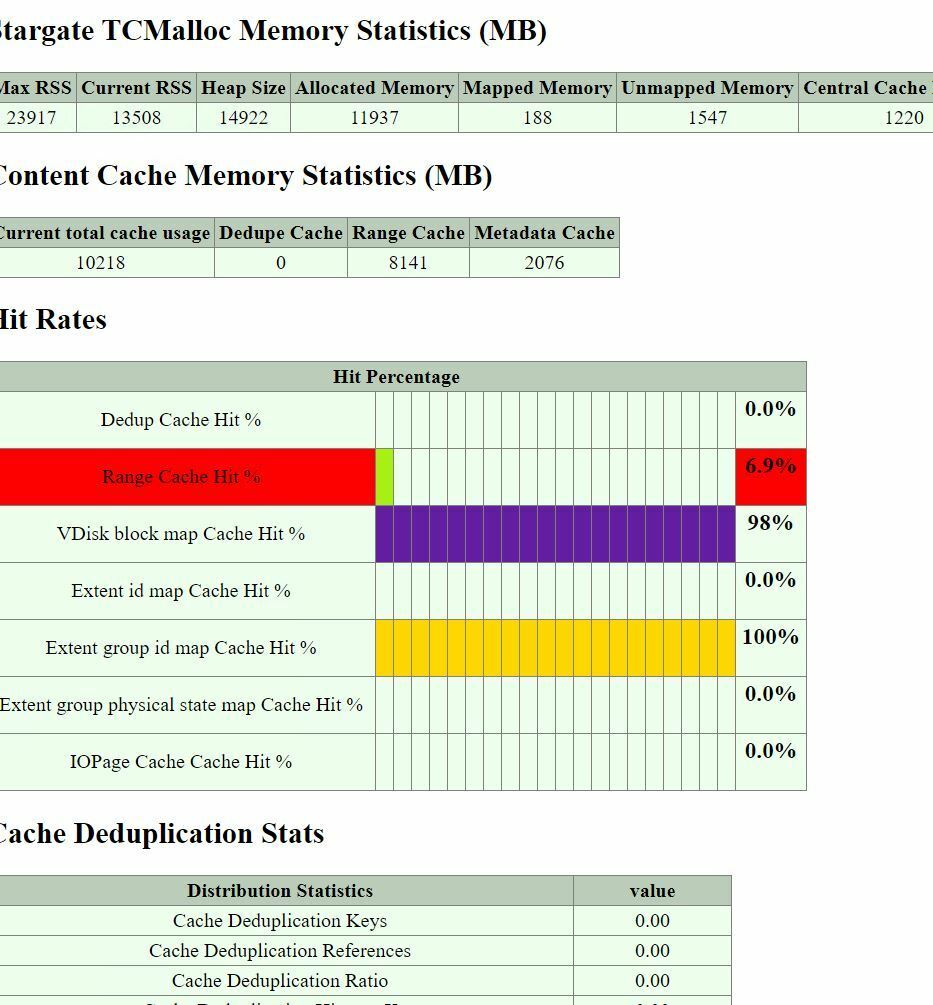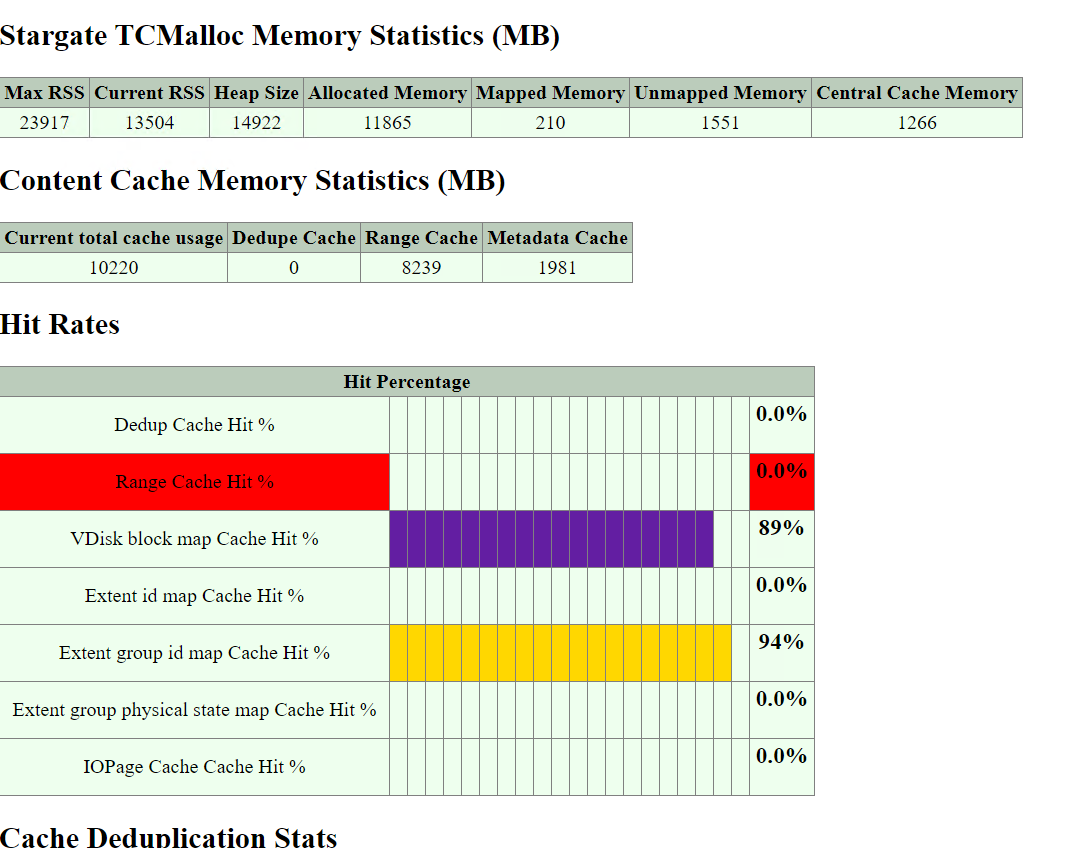你好
我是Nutanix的新手,您能为我解释以下统计数据,以及它在VMS性能中的性能,在备份运行时我获得的高速缓存统计屏幕?

最好的答案Sbarab
From the graphics you have in the above, I am guessing you mean \u201cRange cache hit %\u201d as oppose to \u201cContent cache hit rate\u201d. Correct me if I am wrong and I will try to explain about them here.\u00a0\u00a0\u00a0Most people have a \u201clow read\u201d hit rate for range cache as the work load is not predictive enough. So a 5% to 6% value may not be a bad number here\u00a0compare to a zero percent which indicates a total unpredictability.<\/p>
But for other hit rates in cache_stats like \u201cvdisk block map\u201d and \u201cextentgroupid\u201d map we want to have high hit ratio say\u00a090+% cause if we miss here it results in an on-disk look uo from cassandra (service that cans the cluster data), which is much slower.\u00a0\u00a0I don\u2019t go any further than this in here but just wanted to show that there is a difference between each of the hit rates indicated in page 2009 under \u201ccache_stats\u201d<\/p>
So I did some research\u00a0and here is what I have found. The \u201dContent Cache Hit Rate (%) as presented in \u201cAnalysis\u201d page in prism is really a combination of what \u201ccache_stats\u201d\u00a0\u00a0show in the page 2009 of the cluster.\u00a0 As it is now, it perhaps is not the best measure of assessing performance in cluster as each of the parameters show a specific information and adding them up may not translate well about cluster perfromance overall. That will be changed in the future so people can pick the exact parameter they want among the cache_stats.<\/p>
\u00a0<\/p>
Hope this shed some more light on your concern.<\/p>","className":"post__content__best_answer"}">







